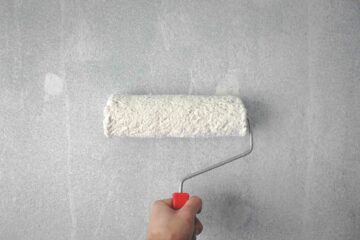 A/A testing is little known and subject to strong discussions on its usefulness, but it brings added value for those who are looking to integrate an A/B testing software with rigor and precision.
A/A testing is little known and subject to strong discussions on its usefulness, but it brings added value for those who are looking to integrate an A/B testing software with rigor and precision.
But before we begin…
What is A/A testing?
A/A testing is a derivative of A/B testing (check out A/B testing definition). However, instead of comparing two different versions (of your homepage, for example), here we compare two identical versions.
Two identical versions? Yes!
The main purpose of A/A testing is simple: verify that the A/B testing solution has been correctly configured and is effective.
We use A/A testing in three cases:
- To check that an A/B testing tool is accurate
- To set a conversion rate as reference for future tests
- To decide on an optimal sample size for A/B tests
Checking the accuracy of the A/B Testing tool
When performing an A/A test, we compare two strictly identical versions of the same page.
Of course, the purpose of an A/A test is to display similar values in terms of conversion. The idea here is to prove that the test solution is effective.
Logically, we will organize an A/A test when we set up a new A/B test solution or when we go from one solution to another.
However, sometimes a “winner” is declared on two identical versions. Therefore, we must seek to understand “why” and this is the benefit of A/A testing.
- The test may not have been conducted correctly
- The tool may not have been configured correctly
- The A/B testing solution may not be effective.
Setting a reference conversion rate
Let’s imagine that you want to set up a series of A/B tests on your homepage. You set up the solution but a problem arises: you do not know to which conversion rate to compare the different versions to.
In this case, an A/A Test will help you find the “reference” conversion rate for your future A/B tests.
For example, you begin an A/A Test on your homepage where the goal is to fill out a contact form. When comparing the results, you get nearly identical results (and this is normal): 5.01% and 5.05% conversions. You can now use this data with the certainty that it truly represents your conversion rate and activate your A/B tests to try to exceed this rate. If your A/B tests tell you that a “better” variant achieves 5.05% conversion, it actually means that there is no progress.
Finding a sample size for future tests
The problem in comparing two similar versions is the “luck” factor.
Since the tests are formulated on a statistical basis, there is a margin of error that can influence the results of your A/B testing campaigns.
It’s no secret how to reduce this margin of error: you have to increase the sample size to reduce the risk that random factors (so-called “luck”) skew the results.
By performing an A/A test, you can “see” at what sample size the test solution comes closest to “perfect equality” between your identical versions.
In short, an A/A test allows you to find the sample size at which the “luck” factor is minimized; you can then use that sample size for your future A/B tests. That said, A/B tests generally require a smaller sample size.
A/A testing: a waste of time?
The question is hotly debated in the field of A/B Testing: should we take the time to do an A/A test before doing an A/B test?
And that is the heart of the issue: time.
Performing A/A tests takes considerable time and traffic
In fact, performing A/A tests takes time, considerably more time than A/B tests since the volume of traffic needed to prove that the two “identical variants” lead to the same conversion rate is significant.
The problem, according to ConversionXL, is that A/A testing is time-consuming and encroaches on traffic that could be used to conduct “real tests,” i.e., those intended to compare two variants.
Finally, A/A testing is much easier to set up on high traffic sites.
The idea is that if you run a site that is being launched or has low traffic, it is useless to waste your time doing an A/A test: focus instead on optimizing your purchase tunnel or on your Customer Lifetime Value: the results will be much more convincing and, especially, must more interesting.
An interesting alternative: data comparison
To check the accuracy of your A/B Testing solution, there is another way that is easy to set up. To do this, your A/B Testing solution needs to integrate another source of analytic data.
By doing this, you can compare the data and see if it points to the same result: it’s another way to check the effectiveness of your test solution.
If you notice significant differences in data between the two sources, you know that one of them is:
- Either poorly configured,
- Or ineffective and must be changed.
Did you like this article? We would love to talk to you more about it.






